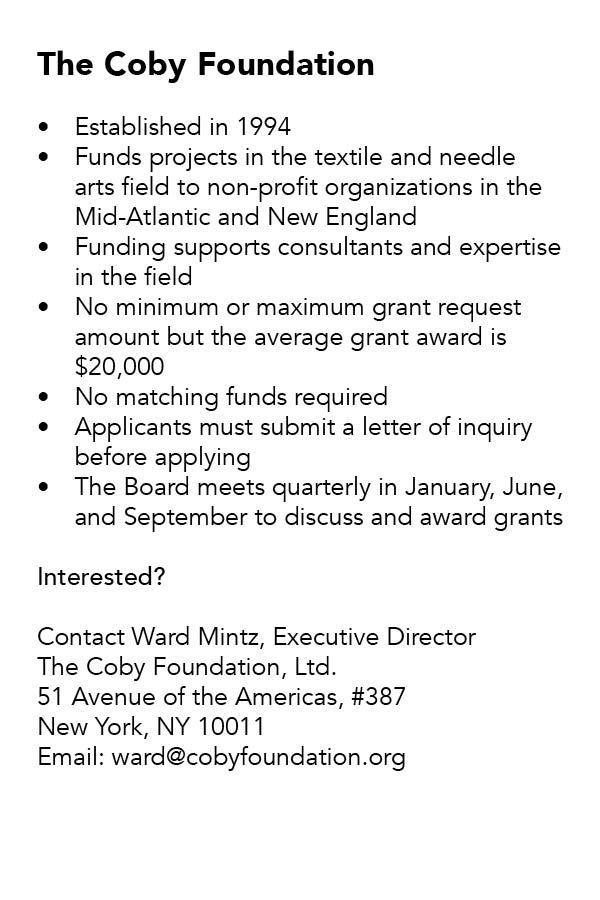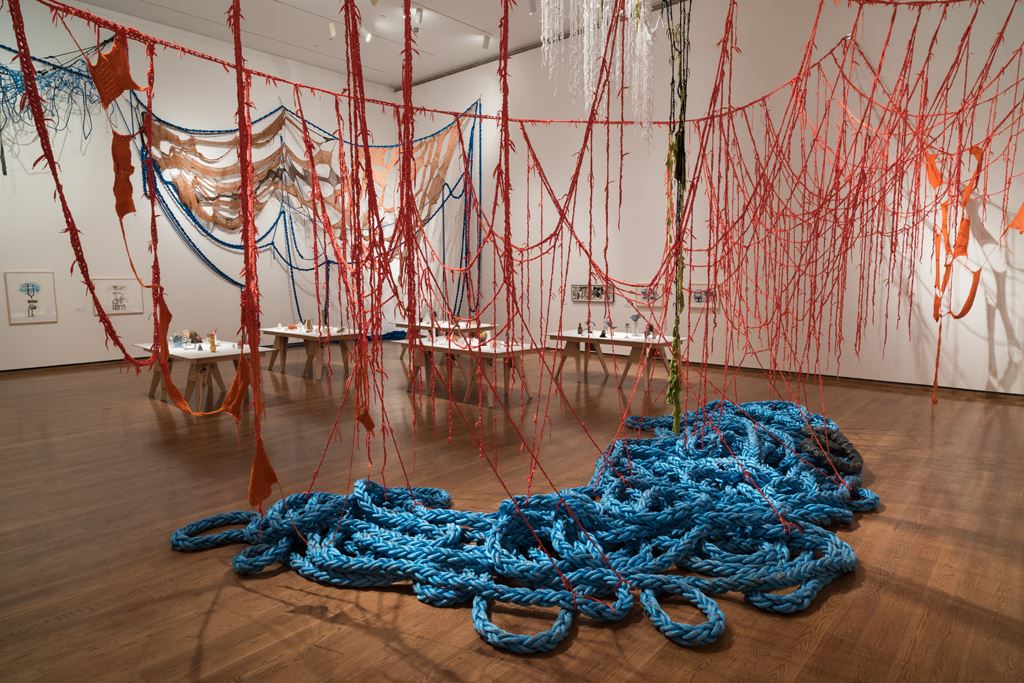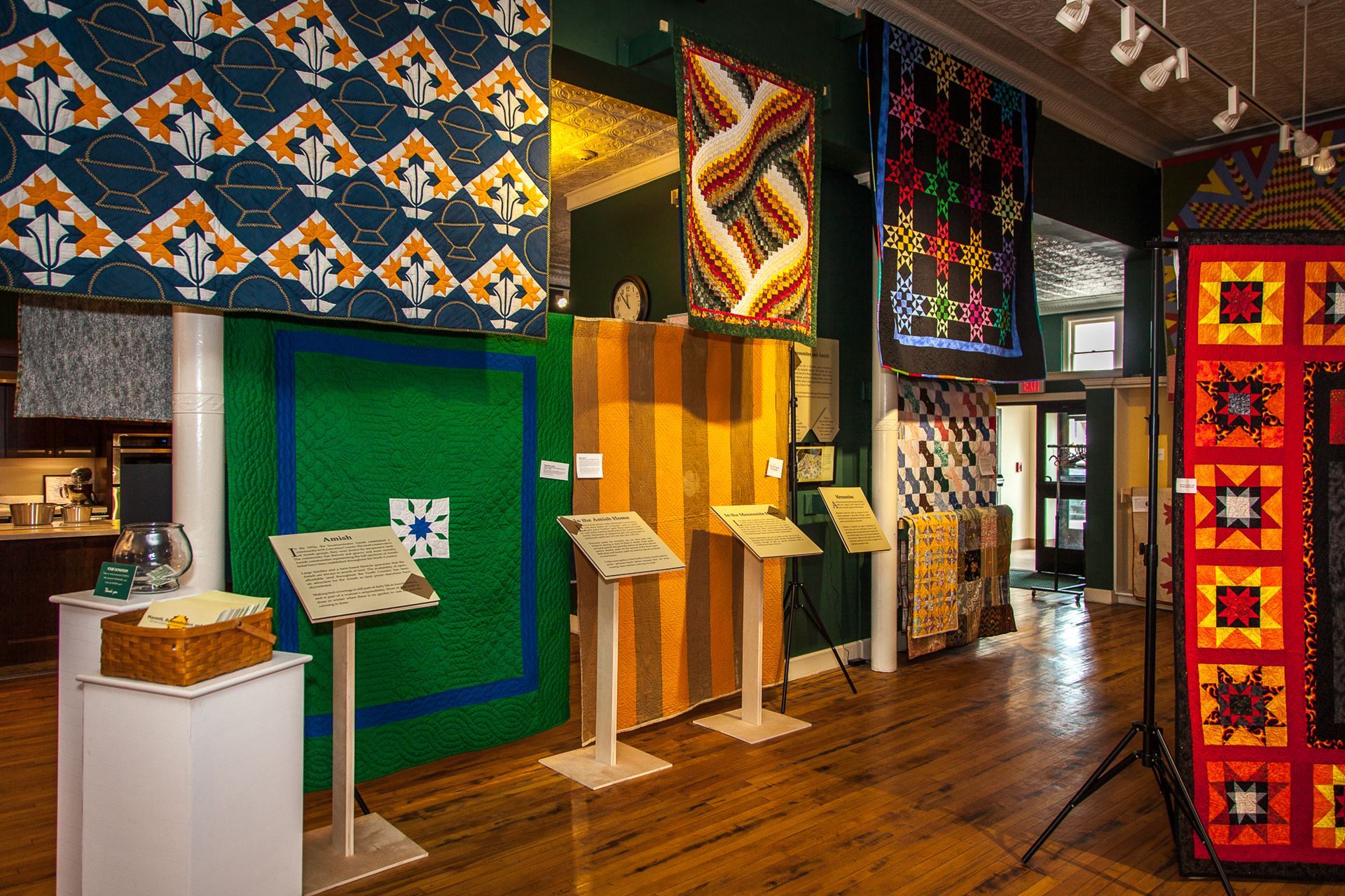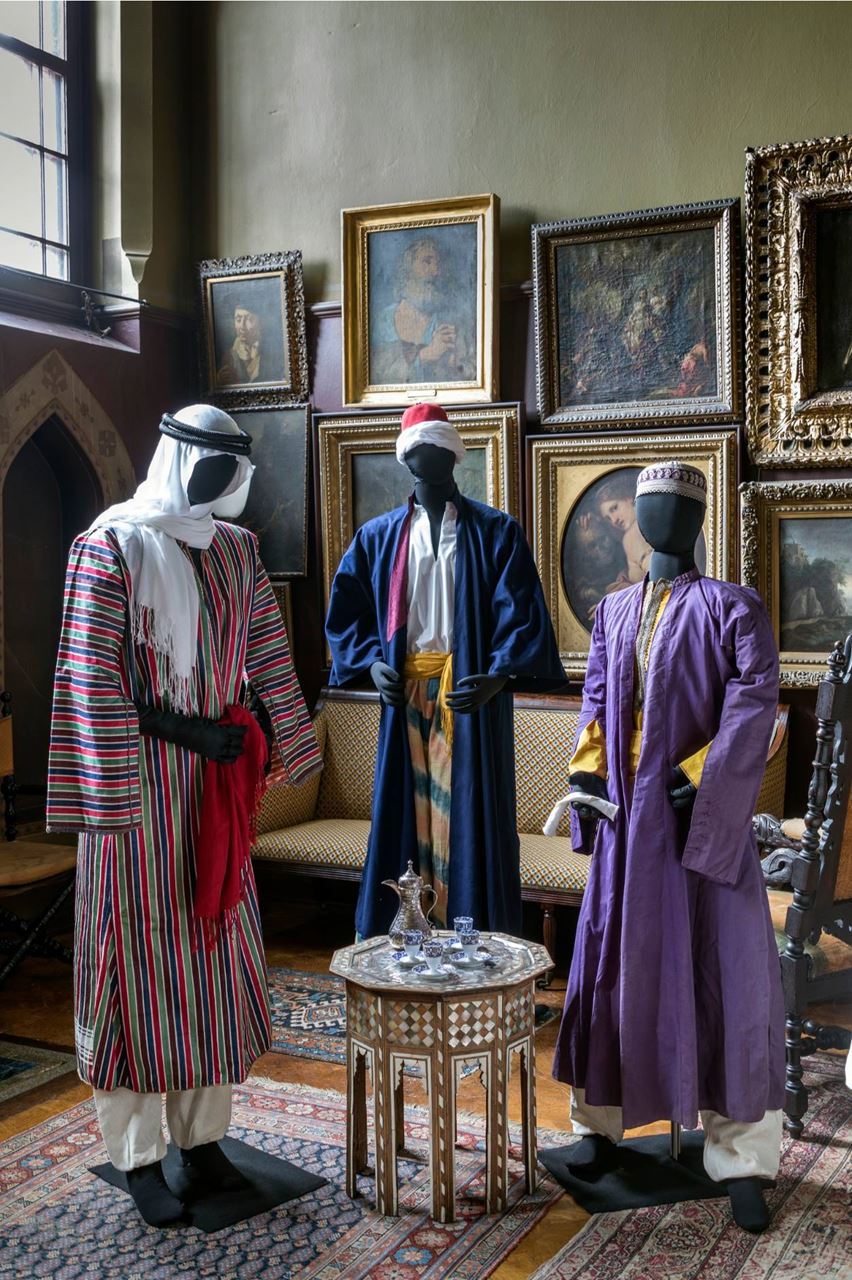The Coby Foundation has awarded more than $5 million to over 170 projects in its history. Established in 1994 by Irene Zambelli Silverman to honor her mother, Irene Meladis Zambelli, the Foundation’s goal is to promote scholarly research about and exhibition implementation for textiles.
 The Foundation provides funding to non-profit organizations in the Northeast and Mid-Atlantic for textile scholarship, consulting, exhibition planning, and exhibition implementation from early antique textiles to contemporary avant-garde. The Foundation supports projects that will benefit the public by creating dynamic exhibitions and public programming. “Artists and designers are turning more and more to textiles for research, inspiration, and for use in their own work so more museums are including academic research and exhibitions for these artists to use as a resource,” said Ward Mintz, the Coby Foundation Executive Director. While the Foundation has funded larger museums like the Baltimore Museum of Art, the Museum of Art and Design (MAD) in New York City, and the Penn Museum at the University of Pennsylvania, the Foundation wants to increase its support to smaller museums, specifically in Upstate New York.
The Foundation provides funding to non-profit organizations in the Northeast and Mid-Atlantic for textile scholarship, consulting, exhibition planning, and exhibition implementation from early antique textiles to contemporary avant-garde. The Foundation supports projects that will benefit the public by creating dynamic exhibitions and public programming. “Artists and designers are turning more and more to textiles for research, inspiration, and for use in their own work so more museums are including academic research and exhibitions for these artists to use as a resource,” said Ward Mintz, the Coby Foundation Executive Director. While the Foundation has funded larger museums like the Baltimore Museum of Art, the Museum of Art and Design (MAD) in New York City, and the Penn Museum at the University of Pennsylvania, the Foundation wants to increase its support to smaller museums, specifically in Upstate New York.
In 2018, The Coby Foundation awarded over $700,000 in grants to textile projects, the largest amount in its history. The Foundation supported twenty projects, the majority of which were contemporary art of design exhibitions.
“Many of these institutions have these collections and need the expertise to look at them and see what they are ...[the Coby Foundation] goal is to not only help museums understand what they have in their textile collection but to put it to use in an exhibition,” Mr. Mintz said. For smaller museums who have a large textile collection but need assistance and guidance on care, preservation, or how best to exhibit these items, the Coby Foundation’s mission is to provide funding to support “exhibitions and programs that combine excellent scholarship and effective interpretation” with an emphasis on providing a public benefit. “Most institutions that we fund don’t necessarily do textile projects all the time.”
Case study: Everson Museum of Art
Shelia Pipe: Hot Mess Formalism, 2017 $40,000

Sheila Pepe: Hot Mess Formalism at the Everson Museum of Art in Syracuse, New York. Photo by David Broda
The Everson Museum of Art in Syracuse, New York, focuses on modern and contemporary American art and was the first museum to classify ceramics as fine art. When President and CEO Elizabeth Dunbar had a chance meeting with Ward Mintz at an event, she mentioned bringing textile artist Sheila Pepe’s Hot Mess Formalism to the Everson. Ward Mintz was eager to help the Everson Museum bring this exhibition organized by the Phoenix Art Museum to Upstate New York. The Coby Foundation was able to fund artist travel costs, as well as programming and installation costs for this exhibition. Previous to this meeting with Mr. Mintz, Director Dunbar did not know about the Coby Foundation. “The Coby Foundation was [and still is] looking to diversify its grant applications outside of New York City,” Director Dunbar told us. “...and if you are not exclusively working with textiles, you might not have encountered the Foundation before.” She noted that the Foundation encourages a one to one conversation regarding exhibition funding and it is helpful to have the letter of intent ahead of the formal application process to see if the Coby Foundation is a good match.
Advice for applicants? “Review previously funded projects to find similarities but also keep in mind that it is a competitive grant process so make your application stand out. Do your homework, and have a conversation with Ward at the start.”
Case study: Traditional Arts in Upstate New York (TAUNY)
Warmth, Remembrance, and Art: 200 Years of Quilts and Comforters in Northern NY, 2016 $25,000

“Warmth, Remembrance, and Art: 200 Years of Quilts and Comforters in Northern, NY” exhibition at the Traditional Arts in Upstate New York. Photo by Dave Warner, artintheadirondacks.com
TAUNY’s mission is to document and present the living traditions and folk culture of the North Country in NYS, a fourteen county region north of the Mohawk River, from Lake Ontario and the St. Lawrence River to Lake Champlain and includes the Adirondack Mountains. Executive Director Jill Breit, a folklorist, partnered with Historian Halle Bond, who had worked previously as the historian at the Adirondack Museum in Blue Mountain Lake (the Adirondack Experience), to travel around the north country to document quilts. Historian Bond had received funding from the Coby Foundation for a textile project. “And I just couldn’t believe that there was a foundation that specialized in supporting scholarship about textiles which is an area that I love and have done a lot of work in...to me that was a dream come true that they had a very specific focus,” said TAUNY Executive Director Jill Breit. Director Breit called Ward Mintz at the Coby Foundation to inquiry more about the Foundation and possible funding opportunities. TAUNY applied for a planning grant to develop a scheme for this quilt exhibition and then applied for a grant to implement their research as an exhibition.
“The Coby Foundation is rigorous about the scholarship. They expect you to have scholars involved with your projects and to really do the research so we had consulting textile scholars who worked with us. It is a good and necessary part of us applying...to have our work vetted by scholars in the area,” Director Breit said. The Coby Foundation wants to help smaller institutions build capacity to learn about textiles and elevate the scholarship around textiles.
Advice for applicants? Have a conversation with Ward Mintz first who can help to frame a letter of intent before the invitation to make a full application. “I always start by talking to the grant officer first, especially with a new foundation that I have not worked with before,” Director Breit said. “Even with a foundation that I have worked with for years, I like to call just to check in to see if anything has changed or if there are new priority areas.”
Case study: Olana State Historic Site
Costume & Custom: Middle Eastern Threads, 2018 $30,000
 Three figures dressed in Middle Eastern Clothing, Dining Room. Photo Courtsey Peter Aaron/OTTO and the Coby Foundation; Olana State Historic Site
Three figures dressed in Middle Eastern Clothing, Dining Room. Photo Courtsey Peter Aaron/OTTO and the Coby Foundation; Olana State Historic Site
The Coby Foundation supported this exhibition at Olana State Historic Site, Frederick Church’s home in Hudson, NY. The exhibition featured clothing collected by Church during his travels to Middle Eastern cities like Damascus, Beriut, Petra, and Jerusalem from 1867 to 1868. Olana had these materials in their collection but had yet to exhibit them. With funding from Coby Foundation, Olana hired Textile and Costume Historian Lynne Bassett and Palestinian costume expert Hana Karaman Munayyer to research the people who wore these clothes that were collected by Church and his use of these cloths in his home and art. What stood out about this project to The Coby Foundation was that this collection was previously untouched and that Olana was working with a Palestinian organization for special docents to lead public tours as well as bringing in experts in the field to do the work. Ward Mintz noted that this exhibition reunited Church’s historic costume collection with Church’s artwork, including displaying original sketches of the clothes that inspired his home at Olana and having the very same clothes in the room.
The Grant Process
-
Send up to a 2-page letter of inquiry either through the website or by email to Executive Director Ward Mintz
-
Provide a budget showing income and expense
If the project meets requirements, the organization is invited to submit a formal application.
What to include in your proposal? “I look to see if there is expertise that they have either acquired a consultant or on the staff for this project,” Mr. Mintz said.
-
Interpretive strategy for an exhibition that is reasonable and intelligent
-
Efforts that the organization is making for public outreach, i.e. to get people in to see the exhibition or participate in accompanying programming
-
Must be a 501c3
-
The project must begin at least three months from the grant award
How much can I apply for? While there is no minimum or maximum grant amount request, not many projects are awarded less than $5,000 or more than $100,000. The average grant awarded is $20,000. There are exceptions if there is a highly unusual circumstance. “If there is a project that is a huge step out for the organization because of the subject matter we might give out a higher percentage...but we want to see outside funding sources besides us to the project that demonstrates a commitment to the project,” Mr. Mintz said.
Other advice? Look at what has been funded in the past. The Coby Foundation has archives on its website for grants awarded from 2012 to 2018. You can see if there are any projects similar to the one you might propose or if there aren't, determine why your project meets The foundation’s guidelines. Mr. Mintz also strongly suggests contacting previously Coby Foundation grantees to ask them about the process. “We are in a generous field with other organizations willing to share their project details...take advantage of this,” Mr. Mintz said.
Learn More
The Coby Foundation
http://cobyfoundation.org/
Sheila Pepe: Hot Mess Formalism at the Everson Museum
https://www.everson.org/explore/past-exhibitions/sheila-pepe-hot-mess-formalism
Warmth, Remembrance, and Art: 200 Years of Quilts and Comforters in Northern NY at TAUNY
http://tauny.org/subpages/42/194/22/quilt-exhibit-2016
Costume & Custom: Middle Eastern Threads at Olana State Historic Site
https://www.olana.org/exhibitions/costume-custom-middle-eastern-threads-at-olana/
